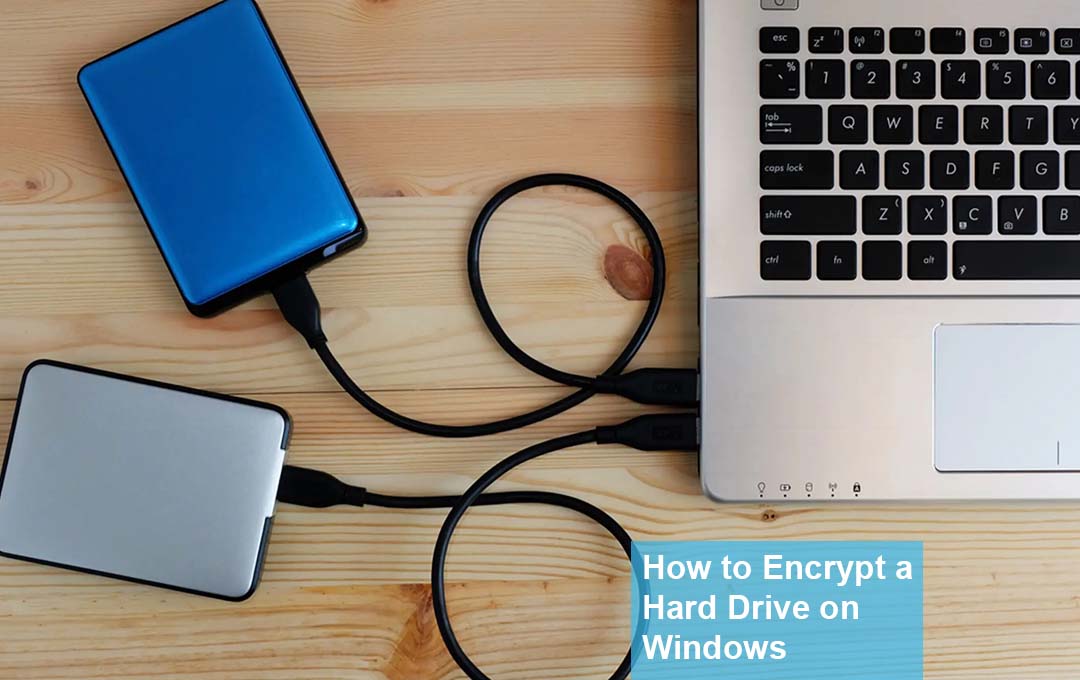Here I would be giving you details on How to Encrypt a Hard Drive on Windows. Your Windows device probably has a passcode, which is the PIN or password you use to sign in. Login security usually prevents unauthorized access to your computer’s data, but not always. In order to access data without login credentials, determined attackers can circumvent security and gain access to your hard drive.

If you are disposing of an old computer or if your computer was stolen; It is possible for malicious parties to remove the hard drive, connect it to another device, and gain access to your data without your permission. Before throwing away an old drive, you should first destroy it. Encrypt it while it is still being used.
How to Encrypt a Hard Drive on Windows
A hard drive is encrypted to protect it and its contents and prevent unauthorized access. Microsoft claims that a password prompt protects the data on the hard drive even when it is plugged into another computer.’
On Windows, we can get our hands on disk encryption using an app called BitLocker. It is prepackaged using the OS, but you are expected to enable and configure it manually. BitLocker happens to be a user-friendly feature, and it takes just some steps for you to have it encrypted.
BitLocker
Most likely, your system might already meet all the requirements for BitLocker to work, but a prerequisite of note is a partitioned hard drive. BitLockers requires you to run one partition that is being encrypted, and the other where the encryption details are stored. If the computer you are making use of carries only a single volume, automatically, Bitlocker would create an extra partition when it is initialized.
Partition would split your hard drive right into volumes that are usable, and you can choose to either encrypt the whole volume or just the space that is in use at the moment. And finally, you would need to log into windows with an administrator account.
The only caveat here is that the windows 10 home edition version of the OS doesn’t feature the BitLocker app. Instead of making use of BitLocker encryption, windows 10 would offer you standard device encryption, which can be enabled with a single click in settings.
How BitLocker works
There are a few different ways to access BitLocker. BitLocker can be installed through the Control Panel, Windows Explorer, PowerShell, or the command line. However, the simplest approach is the Control Panel applet. The Operating System volume — the one with the Windows logo on it — is one of the volumes that can be encrypted.
The rest of the drives can be set up to automatically unlock whenever the operating system drive is encrypted using BitLocker. To turn on auto-unlock for encrypted fixed drives, select that option.
BitLocker allows you to determine if you want to encrypt just the space that is being used or the entire disk when encrypting a drive. Select the Encrypt used disk space only option if your hard drive is new or does not contain much data. Any new data that you write on BitLocker will be encrypting itself automatically.
How to Encrypt your Dard Drive
First, launch the Control Panel > system and Security > BitLocker Drive Encryption.
Search “manage BitLocker” from the start menu.
The BitLocker Control Panel launched with all the available drivers listed alongside their encryption status. They are separated right under the operating system and fixed drive sections. You get to encrypt any or all of these drives.
In other to encrypt any of the drives follow the steps stated below:
- First click on Turn on BitLocker
- Then wait for BitLocker to verify system requirements
- Click next
- After that, save the recovery key to the location you prefer
- Click on “Next”
- Select Encrypt using disk space only or encrypting the entire drive.
- Click “next”
- Unless you would be plugging the hard drive straight into another computer, select the new encryption mode. If the hard disk needs to work using multiple PCs, then select the compatible mode.
- Click “Next”
- Keep the Run BitLocker system check enabled
- Click on “Continue”
Reboot it if required. Once you reboot it, you would find the volume encrypted, just as indicated by the lock icon located close to the disk. Make sure to start the process over again for any or all the fixed data drives.
During the process, BitLocker will also prompt you to save a recovery key. If you forget your password or TPM is unable to properly authenticate your drive, you can use the recovery key, which is a randomly generated string of numbers.



